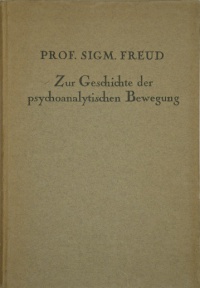 The 1924 German edition | |
| Author | Sigmund Freud |
|---|---|
| Original title | Zur Geschichte der psychoanalytischen Bewegung |
| Translator | A.A. Brill (English version) |
| Language | German |
| Subject | Psychoanalysis |
| Published | Journal article (German): 1914 Book (English translation): 1917 Book (German): 1924 |
| Media type | |
The History of the Psychoanalytic Movement is the 1917 English translation [1] of a 1914 German article (German : Zur Geschichte der psychoanalytischen Bewegung) [2] by Sigmund Freud, the founder of psychoanalysis. It was later published as a separate work in German in 1924. [3]